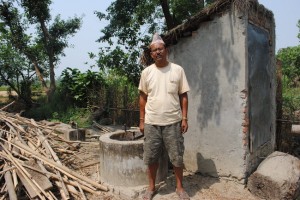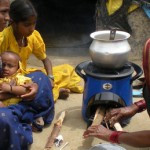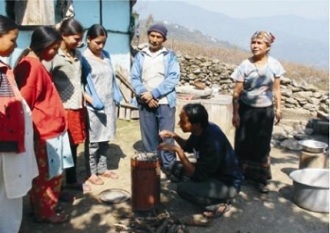New Research Aims To Reduce Deaths Caused by Indoor Air Pollution
October 17, 2011- WASHINGTON, D.C. – The US Agency for International Development (USAID) is supporting the development and evaluation of behavioral approaches to tackle household air pollution. Half of the world’s population cooks with solid fuels on poorly functioning stoves or open fires, primarily using wood or other biomass. Nearly 2 million people, mostly women and children, die each year as a consequence of household air pollution levels that are typically 100 times greater than World Health Organization air quality guidelines.
“Understanding the causes of and solutions for indoor air pollution, a leading cause of respiratory infections, is essential to demonstrate USAID’s commitment to Global Health Initiative goals of protecting women and children, who are disproportionately affected by indoor smoke,” said Dr. Ariel Pablos-Mendez, Assistant Administrator, Global Health with USAID.
Global efforts have focused on creating and testing improved clean cookstoves, switching to higher-quality, lower emission fuels and improved household ventilation as a key Interventions to reduce household air pollution. Though these hold promise to reduce household air pollution evidence-based practical approaches to scaling-up and sustaining these interventions in developing country settings have been limited.
For a household air pollution intervention to be effective, families must use it consistently and correctly. The core user, in this case women who do majority of the cooking in most settings, needs to be motivated to purchase and fully adopt a technology based on their personal preferences, the social norms, knowledge and attitudes in their communities, product affordability and access, and perceived priorities. Adjusting cooking practices can entail a high degree of behavior change which may encourage or hamper overall uptake.
The challenge is how to protect the health and safety of families, honor local cooking traditions and support the effective uptake of clean and efficient household solutions.
USAID is investing in behavioral research to guide the implementation of interventions to reduce pollution exposure. USAID has awarded three grants totaling $1.3 million to Duke University, Impact Carbon in San Francisco, and Seattle-based PATH to investigate the factors that enable families to purchase improved clean cookstoves and use them correctly over a sustained period. The studies will examine institutions and incentives that promote stove acquisition and use and develop and test interventions on how best to introduce new stove technologies, change the home environment, and influence individual attitudes, beliefs, and behaviors.
Researchers from the Duke Global Health Institute and Sanford School of Public Policy will carry out research in Uttar Pradesh, India; and PATH and Impact Carbon will conduct studies in Uganda. All of the grantees will work with local partner organizations.
The Global Alliance for Clean Cookstoves, a public-private partnership led by the United Nations Foundation, aims to reach 100 million homes by 2020. The US government pledged $50 million and joins other U.S. agencies, other donor countries, host governments, corporate founding partners Morgan Stanley and Shell, academia and civil society in this global effort to address health, safety, environment, women and children.
The Duke Global Health Institute was created to address health disparities at home and around the world, by bringing together Duke faculty from different disciplines to make significant contributions to the prevention and treatment of health problems. PATH is an international nonprofit organization that collaborates with diverse public- and private-sector partners, to provide appropriate health technologies and strategies that change the way people think and act. Impact Carbon works with researchers and practitioners to bring clean-burning and efficient stoves and fuels to people in low income countries.
http://www.usaid.gov/press/releases/2011/pr111017_1.html





